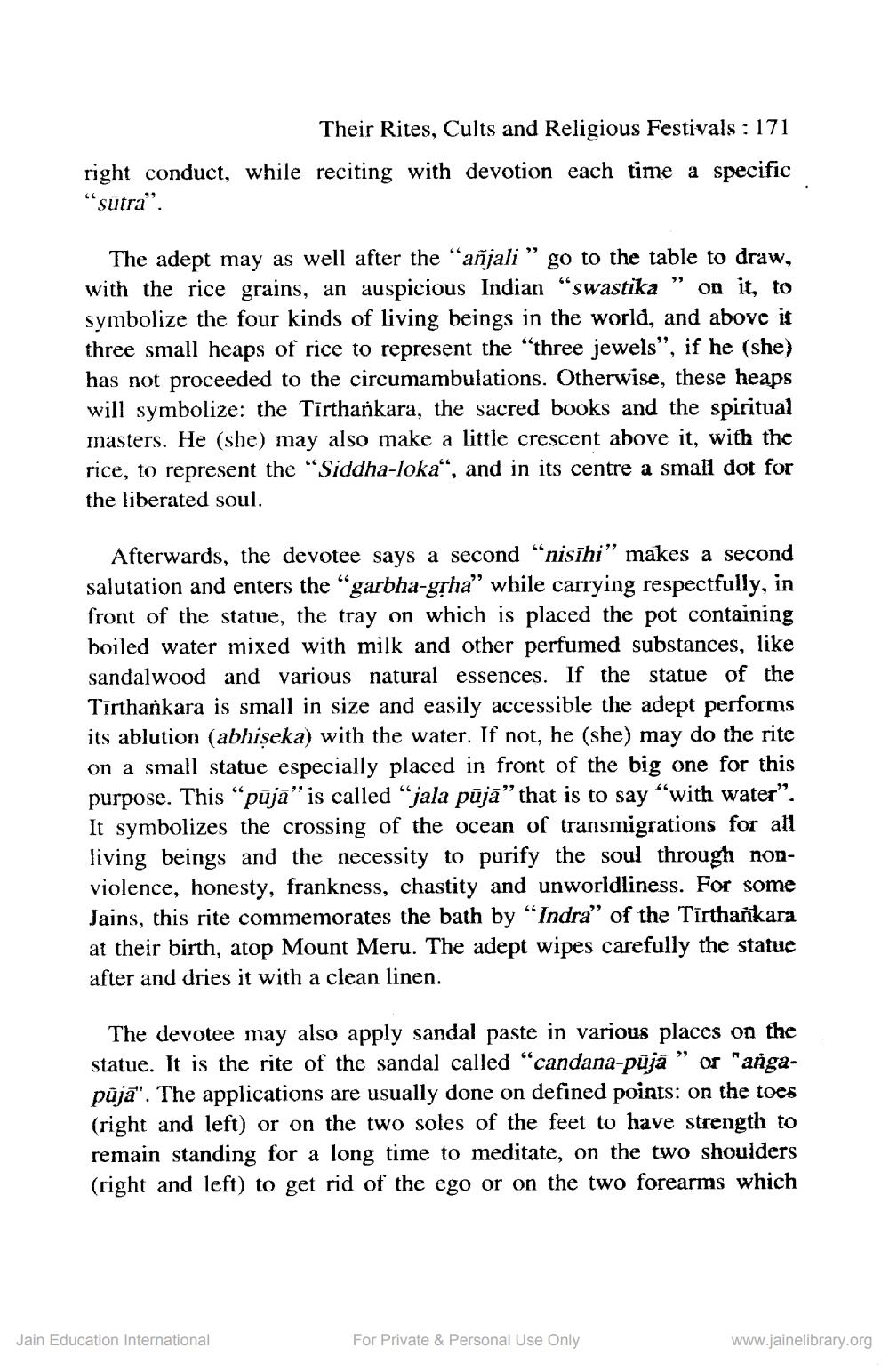________________
Their Rites, Cults and Religious Festivals : 171 right conduct, while reciting with devotion each time a specific “sutra”.
The adept may as well after the “añjali " go to the table to draw, with the rice grains, an auspicious Indian “swastika ” on it, to symbolize the four kinds of living beings in the world, and above it three small heaps of rice to represent the "three jewels", if he (she) has not proceeded to the circumambulations. Otherwise, these heaps will symbolize: the Tīrthankara, the sacred books and the spiritual masters. He (she) may also make a little crescent above it, with the rice, to represent the "Siddha-loka", and in its centre a small dot for the liberated soul.
Afterwards, the devotee says a second “nisīhi” makes a second salutation and enters the “garbha-gļha” while carrying respectfully, in front of the statue, the tray on which is placed the pot containing boiled water mixed with milk and other perfumed substances, like sandalwood and various natural essences. If the statue of the Tirthankara is small in size and easily accessible the adept performs its ablution (abhișeka) with the water. If not, he (she) may do the rite on a small statue especially placed in front of the big one for this purpose. This "pājā" is called “jala pūjā” that is to say “with water”. It symbolizes the crossing of the ocean of transmigrations for all living beings and the necessity to purify the soul through nonviolence, honesty, frankness, chastity and unworldliness. For some Jains, this rite commemorates the bath by “Indra” of the Tirthankara at their birth, atop Mount Meru. The adept wipes carefully the statue after and dries it with a clean linen.
The devotee may also apply sandal paste in various places on the statue. It is the rite of the sandal called “candana-püjā ” or "angapūja". The applications are usually done on defined points: on the toes (right and left) or on the two soles of the feet to have strength to remain standing for a long time to meditate, on the two shoulders (right and left) to get rid of the ego or on the two forearms which
Jain Education International
For Private & Personal Use Only
www.jainelibrary.org




